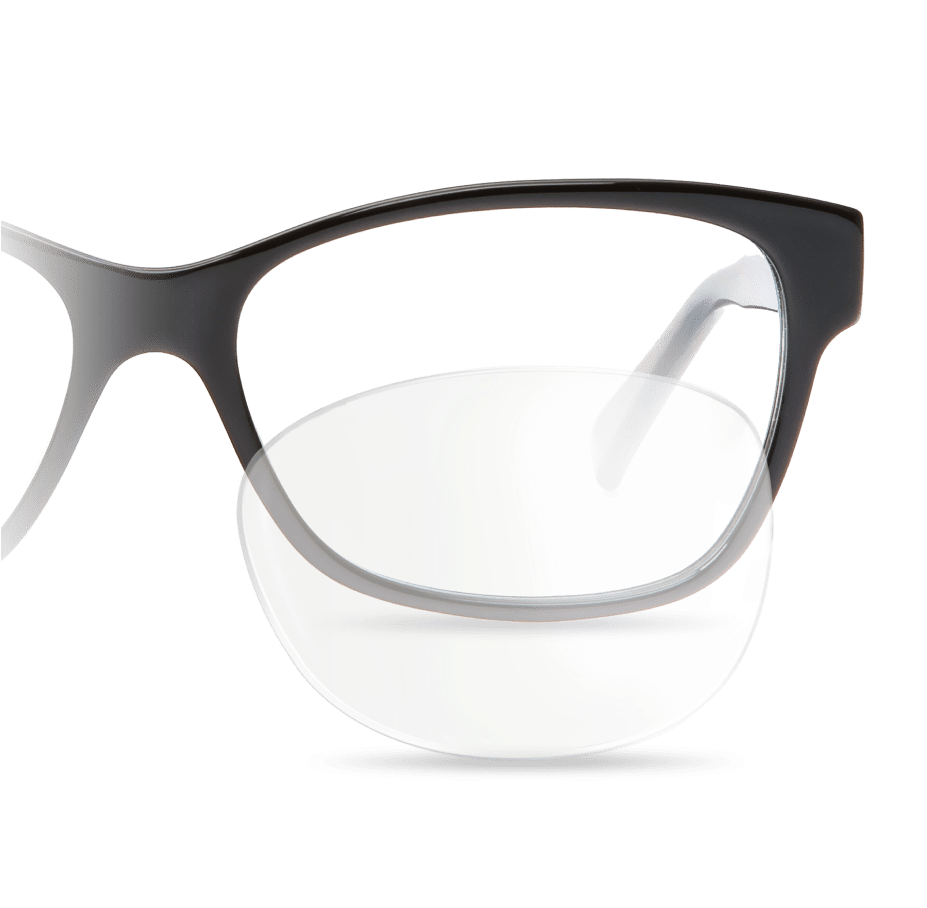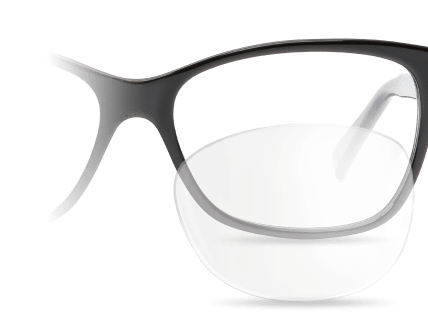Transitions® Lenses vs. Sunglasses: Pros & Cons Compared

Are you wondering if you should purchase Transitions® lenses or sunglasses to protect your eyes this summer? With the array of eyewear options available, choosing what suits your needs can feel overwhelming. This guide will compare Transitions® lenses and sunglasses, helping you make an informed choice based on lifestyle, convenience, and cost-effectiveness.
Transitions® Lenses vs Prescription Sunglasses?
Transitions® lenses and sunglasses are two of the most popular choices for people who want both vision correction and protection from the sun’s harmful UV rays.
Transitions® lenses, also known as photochromic lenses, darken when exposed to UV light and return to a clear state in dimmer environments. This process, driven by advanced photochromic technology, offers seamless eye protection without the need to carry multiple pairs of glasses. They are particularly beneficial for indoor-outdoor transitions and provide continuous UV protection, making them a convenient choice for individuals who wear prescription eyeglasses.
On the other hand, traditional sunglasses are fixed-tint lenses specifically designed for outdoor use. Whether you’re enjoying outdoor activities, participating in sports, or simply relaxing on a sunny day, prescription sunglasses offer a stylish and reliable solution. Many models also come with polarised lenses, which are excellent for reducing glare and improving visibility during bright, sunny conditions.
Key Differences Between Transitions® Lenses and Sunglasses
- Light Adaptability: Transitions® lenses adjust automatically, while sunglasses maintain a static tint.
- UV Protection: Both options block UV rays.
- Convenience: Transitions® lenses eliminate the need to carry separate prescription glasses and sunglasses.
- Driving Effectiveness: Sunglasses perform better behind a car windshield, where Transitions® lenses may not darken adequately.
- Cost: Transitions® lenses may have a higher initial cost, but can be more cost-effective long-term as they replace multiple pairs of glasses.
Transitions® Lenses and How They Work
Transitions® lenses use a coating infused with photochromic molecules that react to UV light. Under sunny conditions, these molecules undergo a chemical transformation, causing the lenses to darken and reduce the amount of light entering your eyes. When the UV light diminishes, the molecules return to their clear state. This adaptability makes photochromic lenses suitable for a wide variety of lighting conditions.
However, certain factors affect their functionality:
- Cold weather: Transitions® lenses may take longer to adjust in colder environments.
- Driving limitations: Since many car windshields block UV light, the lenses may not darken sufficiently during daytime driving.
- Customization options: Modern Transitions® lenses are available in a range of lens colors and can accommodate specific prescriptions for prescription eyeglasses.
By incorporating advanced technology, Transitions® lenses offer a convenient option for those seeking to simplify their eyewear needs.
Benefits of Transitions® Lenses
- Offer protection from UV rays without switching between glasses.
- Provide a cost-effective solution if you need both prescription lenses and UV protection.
- Reduce the risk of losing additional pairs of glasses.
- Lightweight and available in modern, stylish frames.
- Limit light sensitivity while transitioning between different environments.
Drawbacks of Transitions® Lenses
- Adaptation times may vary based on temperature and UV light levels.
- Less effective against glare compared to polarized lenses.
- May not darken sufficiently in cars due to limited UV exposure.
Why Choose Traditional Sunglasses
Traditional sunglasses are the go-to eyewear for outdoor enthusiasts and fashion-forward individuals. They offer 100% UV protection and are available in a wide variety of lens tints, shapes, and styles to suit specific needs. Specialised features, such as polarized lenses, enhance clarity and reduce glare, making them ideal for bright sunlight or reflective surfaces like water and snow.
Advantages of Sunglasses
- Glare reduction: Polarized lenses help reduce reflective glare, improving visibility during activities like driving, boating, or hiking in bright sunlight.
- Custom tints: Sunglasses come in various tints to enhance your visual experience. For example, amber or yellow tones improve contrast in low-light conditions, while gray lenses ensure color accuracy in intense sun.
- Style versatility: With options ranging from sporty to designer frames, prescription sunglasses can make a bold fashion statement.
- Immediate comfort: Sunglasses are instantly effective at shielding your eyes from UV rays without the adjustment time needed by transition lenses.
- Ideal for driving: Unlike Transitions® lenses, sunglasses excel behind a car windshield, offering superior UV protection.
Cons of Traditional Sunglasses
- Require carrying an extra pair if you already wear prescription glasses.
- They don’t adapt to varying levels of UV light, meaning you’ll need to switch glasses indoors.
- Can be expensive when opting for prescription sunglasses paired with additional features like polarization.
Cost Considersations
When deciding between Transitions® lenses vs sunglasses, cost is an important factor. Transitions® lenses may have a higher upfront price, but they eliminate the need to purchase multiple pairs of glasses, offering a cost-effective solution for those who wear glasses. Meanwhile, investing in a single pair of prescription sunglasses often costs less initially but may necessitate owning additional glasses for indoor use.
Style and Aesthetics
When it comes to style and aesthetics, both Transitions® lenses and prescription sunglasses offer unique advantages. Photochromic lenses are available in a wide range of modern and classic frame styles, allowing you to choose a look that suits your personality. However, the lens color of photochromic lenses may not reach the same level of darkness as traditional sunglasses, which can be a consideration if you prefer a bold, tinted look.
Prescription sunglasses, on the other hand, provide even more flexibility in terms of frame designs and lens colors. You can select from a variety of trendy shapes, vibrant hues, and even specialty features like anti-reflective coatings or polarized lenses for specific needs such as reducing glare during outdoor activities. If making a fashion statement or matching your eyewear to your wardrobe is important to you, prescription sunglasses offer a broader palette of options to express your style.
Choosing the Right Option for You
To find the perfect eyewear, consider answering these questions:
- Do you frequently switch between indoor and outdoor environments?
- Is glare reduction a significant concern for your daily activities?
- Are you looking for a single, convenient option or willing to manage two pairs of glasses?
- What is your budget, and are you open to investing in advanced features like photochromic technology or polarized lenses?
- How important are style and customization in your eyewear choices?
Making a Decision: Are Transitions® Lenses as Good as Sunglasses?
If you’re seeking an all-in-one solution, Transitions® lenses offer unparalleled convenience by eliminating the need to carry a pair of prescription sunglasses. They work well for people who prioritize adaptability and simplicity while ensuring full protection from harmful UV rays.
Alternatively, if glare reduction and style flexibility are top considerations, sunglasses remain the classic choice. Their polarized lenses are particularly suited for outdoor enthusiasts and drivers.
By understanding the key differences between transition lenses vs sunglasses, you’ll be well-equipped to choose the option that aligns with your lifestyle, vision needs, and personal preferences.
For expert guidance on selecting the right eyewear, explore our extensive collection of lenses and frames, specifically designed to protect your eyes while matching your fashion sensibilities. Have questions? Fill out our convenient form, or email us at [email protected]













